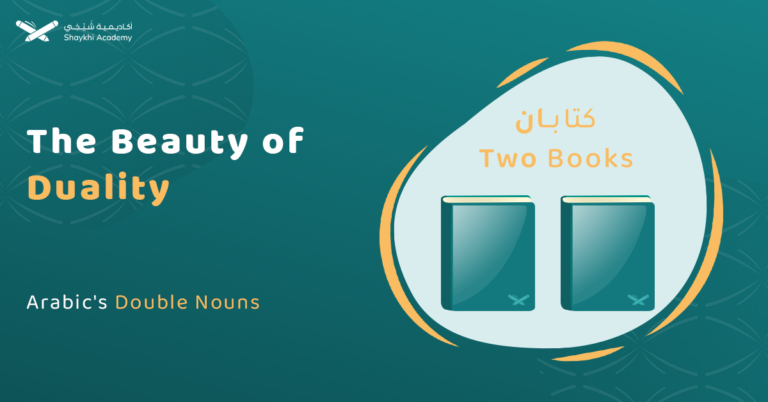
Verbal Nouns In Arabic With Examples
Some grammatical rules from different languages resemble each other. Verbal nouns in Arabic resemble gerunds in English. It’s a rule

Some grammatical rules from different languages resemble each other. Verbal nouns in Arabic resemble gerunds in English. It’s a rule

Unlike other languages like English, Arabic has a unique grammatical rule: dual (Al-Muthanna). In Arabic, this form refers to two

If you are a new learner of the Arabic Language, Arabic Irregular verbs may be annoying. You need to say

One of the most important features of the Arabic grammar system is the Arabic cases. They may be challenging at

The Arabic language stands out for its tools, such as “Inna wa Akhawatuha,” which enhance precise articulation and enrich stylistic

The great importance of Arabic Interrogatives appears during your learning journey since you need to ask questions in class and

The possessive pronouns show the ownership statuses between the owned objects and its owners. This article rummages through the intricacies

Curious about the story behind the unique marks attached to Arabic writing, known as Arabic short vowels? Do you know

Arabic long vowels, or Mudud, are elongated sounds formed by Alif, Waw, and Yaa when preceded by Fatha, Dhamma, or

Arabic conjunctions (حروف العطف) link words and phrases to form coherent sentences, with types like “و” (and), “لكن” (but), and

In Arabic, Alif has two primary types: Alif Al-Wasl (silent, connecting) and Alif Al-Qata’ (pronounced with Hamza). It also has

Arabic detached pronouns are independent words used as subjects, objects, or possessives, categorized by number and gender. They include pronouns